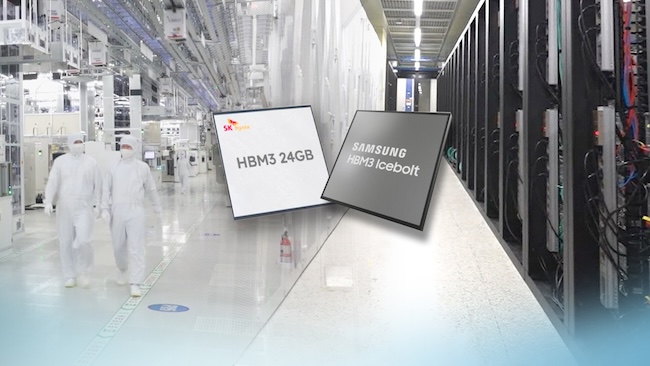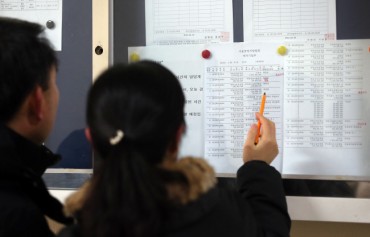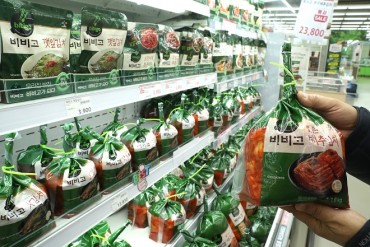
Samsung Electronics and SK Hynix are actively working on securing leadership in the HBM market while also maintaining a strategy of reduced output in the sluggish NAND flash memory sector. (Image courtesy of Yonhap)
SEOUL, Nov. 6 (Korea Bizwire) – Expectations for the arrival of the ‘time of semiconductors’ are rising both within and outside the semiconductor industry due to the increasing demand for High-Bandwidth Memory (HBM) in tandem with the expansion of the artificial intelligence (AI) market. Samsung Electronics and SK Hynix are actively working on securing leadership in the HBM market while also maintaining a strategy of reduced output in the sluggish NAND flash memory sector, aimed at enhancing profitability through technological advantages.
According to industry sources on Sunday, Samsung’s semiconductor unit reported a loss of 3.75 trillion won in the third quarter of this year, reducing its deficit by approximately 600 billion won compared to the previous quarter. SK Hynix also cut its deficit by over 1 trillion won in comparison to the previous quarter. This improvement can be attributed to the positive impact of the semiconductor industry’s output reduction, which has led to better inventory management and price increases.
After a prolonged period of decline, memory chip prices are rebounding. According to market research firm DRAMeXchange, the average fixed transaction price of general-purpose DRAM products (DDR4 8Gb) for use in PCs in October showed a 15.38 percent increase compared to the previous month, marking a rebound for the first time since July 2021. The price of general-purpose NAND flash products (128Gb 16Gx8 MLC) for use in memory cards and USB devices also increased by 1.59 percent, marking the first increase in more than two years.
Currently, the rising star in the semiconductor industry is HBM. With global tech giants making significant forays into the AI market, major GPU manufacturers such as Nvidia and AMD are increasing their orders for HBM, intensifying the competition among major chipmakers for dominance in the HBM market. Hyundai Motor Securities analyst Noh Geun-chang stated, “The HBM market is expected to more than double this year, reaching $4.4 billion. Even in 2024, the HBM market is projected to grow by 150.7 percent, driven by the development of HBM3E and HBM3.”
However, the issue lies with NAND. Despite a significant decline in NAND prices over the past two years, demand has not met expectations, leading to increased supply and higher inventory levels, thereby worsening profitability. Particularly, the growing number of NAND layers has increased the burden of investment, resulting in a slowdown in the pace of cost reduction.
NAND is less impacted by the AI market’s expansion than DRAM, and due to intense competition among suppliers, it is likely to take more time for the NAND market to recover.
Kevin Lee (kevinlee@koreabizwire.com)






